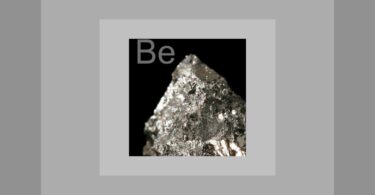How does one know the constitutional remedy of an animal? By studying the Materia Medicas. My favorite Materia Medicas for this are John Henry Clarke’s and Frans Vermeulen’s. I often encourage my students to choose one of the polychrest remedies such as Sulphur, Lycopodium, Calcarea Carbonicum, Phosphorus, Sepia, Natrum Muriaticum and Pulsatilla (just to name a few) and read in Clarke’s Materia Medica from page to page. It is here that we get all sorts of powerful information that will clue us into both physical and emotional characteristics of that remedy, plus unique keynote symptoms of that remedy that will paint a clear picture to help you see the constitutional of the animal.
For example, let’s look at some quotes from Clarke’s Materia Medica for Lycopodium. He states that Lycopodium “is particularly suited to persons of keen intellect but feebler muscular development; upper part of body wasted, lower semi-dropsical; sallow people with cold extremities, haughty disposition…In my experience it has been more indicated in persons of dry temperament and dark complexion.“ In a description such as this, even though it pertains to people, we can take certain aspects of it and translate it over to the animal world. Lycopodium may constitutionally fit those animals with a “dry temperament.“ For example, they may be neither dominant nor aggressive in the herd or household, nor submissive and lowest man on the totem pole. They are just sort of inbetween, in the middle of the hierarchy. They do not make any waves in the household. They sort of get along with everyone and have enough confidence to be content by themselves. They do sometimes show a “haughty“ or snobbish attitude. When we see this type of personality in an animal we then look at keynote symptoms the animal shows, to see if he or she fits the picture constitutionally.
I once had a case where a pet owner asked me to help his 16 year old cat. The cat was crying out very loud at night and the pet owners could not find an answer for it. Not having any other symptoms besides the crying out to go on, I simply decided to observe the cat and hone in on his personality, hoping it would lead me to his constitutional remedy. After observation, Lycopodium fit the bill. The pet owners began to dose him Lycopodium and the crying at night stopped. They needed to dose him regularly so we went with an LM potency. Fat Cat (that was his name) enjoyed his Lycopodium for two and a half years. One day Fat Cat came in from outside and was limping badly. Thinking he hurt himself, the pet owners took him to the vet. The veterinarian x-rayed him and could not understand what she had discovered. Fat Cat had accelerated bone cancer according to the x-rays. It wasn’t just in his foot, but throughout his ribs. She questioned the pet owners because she could not understand how this animal was not showing signs of being in any pain. He was eating, sleeping and playing. She asked about “this Lycopodium“ without knowing anything about homeopathy. She was thinking Lycopodium was a remedy strictly for bone cancer. It is not. When we choose the constitutional remedy in animals, it helps them overall so they can naturally overcome their illness.
In Vermeulen’s Materia Medica he opens up Sulphur with “The king of remedies around which centres the whole Materia Medica.“ By definition king means “ a male sovereign; a chief among competitors.“ This pretty much sums up the character of a Sulphur constitution. They are the leaders in the household, pack or herd whom everyone else follows. They are the charismatic kings. They are the animals in the house that get everyone else to do exactly what they want them to do, when they want them to do it. The whole world centers around them. Vermeulen also states about Sulphur that they are “dirty, filthy people, prone to skin affections.“ We can translate this right over to animals too. The Sulphur animal always seems to have a dirty disheveled coat. Sulphur animals are fun to observe in their family pack or herd.
Clarke states this in his Materia Medica about Pulsatilla from Hahnemann “A timid, lachrymose disposition, with a tendency to inward grief and silent peevishness, or at all events a mild and yielding disposition.“ Clarke also states that “ Pulsatilla has the behavior of the Wind Flower, the sport of every gust.“ When one imagines the windflower we can see it blowing back and forth and back and forth. This can be likened to one changing their mood back and forth, from one extreme to another. As Clarke writes “ easily moved to laughter and tears.“ So in animals we can see the Pulsatilla constitution as being very shy and timid, whiny (lachrymose) and easily changing their mood such as barking at you one minute and wagging their tail the next.
I will give you an example. I have recently had a case where a Great Dane puppy has suffered from very soft stools, explosive diarrhea on change of food, and lack of gaining weight. When I met Rex, the Great Dane, he was shy and timid. The whole time I was there he would bark at me with that uncertain timid bark. When it was time for me to leave he changed his mind and placed his body to prevent me from going. He then wanted me to continually pet him, when minutes ago he wouldn’t let me touch him. Since he has been dosed with Pulsatilla, his stools are formed and he is filling out his weight!
Calcarea Carbonicum is another constitutional remedy you will find very frequently in the animal kingdom. They are rather easy to spot. Vermeulen states about Calc Carb “ children who grow fat, who are large-bellied, with large head, pale skin, chalky look, the so-called leucophlegmatic temperament. Calcarea patient is fat, fair, flabby and perspiring.“ I have had a recent case in which a French bull dog puppy was constantly suffering from severe skin eruptions on her genital area, abdomen, chest and in the joint crevices of her front legs. When I met her I immediately saw her large head and barreled chest. She is on the larger size for her breed. Her skin is pink and pale white. She sauntered over to me with her square body and large head with a laid back look in her face. I immediately thought “Calc Carb!“ Sure enough, her rash symptoms scored very high with Calc Carb. After a full year of suffering, Calc Carb has healed her year long rash!
This is how one should study the Materia Medicas. Read through from start to finish on each constitutional remedy and you will begin to get that picture of the remedy in your mind. Homeopathy is an art. In Webster’s dictionary art means: 1) a skill acquired by experience or study; 2) the use of skill and imagination in the production of things of beauty. When we study the Materia Medicas, then transpose it over into the animal world with a little bit of imagination, we acquire the skill needed to choose the appropriate remedy to bring about the beautiful cure!
Enjoy your Materia Medicas!
Michele





This was an excellent read! Thank you!!
Michele,
I am confused by the Lycopodium example of ‘Fat Cat’. From your report, it seems Lyc prolonged the cat’s pain-free enjoyment of life, and perhaps his actual life (you don’t say what happened after the vet’s bone cancer diagnosis.) BUT, as a result of dosing with Lyc, the primary symptom disappeared (the crying at night – a signal of pain/distress), no further investigation followed and the cancer was not detected/treated (whether conventionally or with another remedy.)
You concluded Fat Cat’s report with: “When we choose the constitutional remedy in animals, it helps them overall so they can naturally overcome their illness.” Of course, this is the desired outcome. But it depends what is meant by ‘overcome’; in Fat Cat’s case it evidently did not include a cure of the cancer, which is what I thought we should be aiming for (if not too late, etc.) Or was this really a successful (if unintended) case of palliation?
Am I missing something?? (the point, probabbly!)
Thanks for the interesting article.
Mary Lynn Hughes